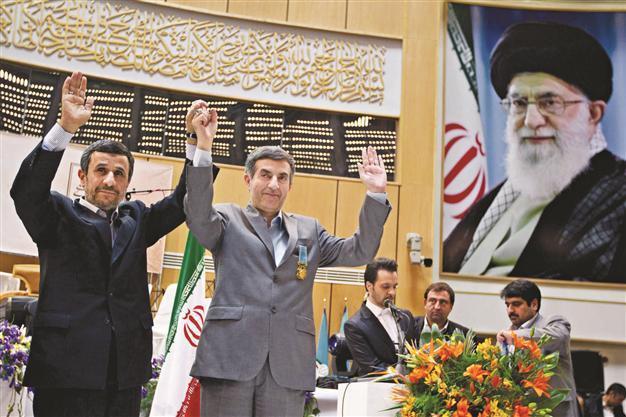‘Huge costs, few benefits’ in Iran’s nuke program
DUBAI - Reuters

President Ahmadinejad (L) is seen with chief of staff Rahim Mashaei in this photo. Tehran says its nuke program is peaceful, defying Western concerns. AP photo
Iran will pursue its nuclear quest despite the fact that it has reaped few gains from a totem of national pride which has cost it well over $100 billion in lost oil revenue and foreign investment alone, two think-tanks said yesterday.
A report by the Washington-based Carnegie Endowment for International Peace and the Federation of American Scientists said Iran’s atomic work could not simply be ended or “bombed away” and that diplomacy was the only way to keep it peaceful.
“It is entangled with too much pride - however misguided - and sunk costs simply to be abandoned,” the report’s authors, Ali Vaez of the International Crisis Group and Carnegie’s Karim Sadjadpour, said of Iran’s five-decade-old nuclear program, which first began under the U.S.-allied shah.
“Given the country’s indigenous knowledge and expertise, the only long-term solution for assuring that Iran’s nuclear program remains purely peaceful is to find a mutually agreeable diplomatic solution,” the report said.
Iran says its nuclear work has medical uses and will produce energy to meet domestic demand and complement its oil reserves.
The U.S. and its allies have demanded that Iran curb its enrichment of uranium and have imposed increasingly tough sanctions on Iran’s energy, banking and shipping sectors that have cut Iranian oil exports by more than half since 2011. Iran and six world powers are due to meet in Kazakhstan this week in the hope of finding a solution to the standoff. Their last meeting in February failed to achieve a breakthrough.
Ill-maintained, old linesThe report, entitled “Iran’s Nuclear Odyssey: Costs and Risks,” seeks to tabulate the opportunity costs of the nuclear program, and puts these at “well over $100 billion” in terms of lost foreign investment and oil revenues.
Relatively small uranium deposits will keep Iran from being fully self-sufficient in nuclear energy, it said, while Tehran has neglected to maintain existing infrastructure and develop other resources that could better secure its energy needs. For instance, Iran’s 1,000-megawatt Bushehr nuclear reactor, which came on-stream in 2011 after repeated delays, accounts for just 2 percent of its electricity production, while about 15 percent of “generated electricity is lost through old and ill-maintained transmission lines,” the report said.
